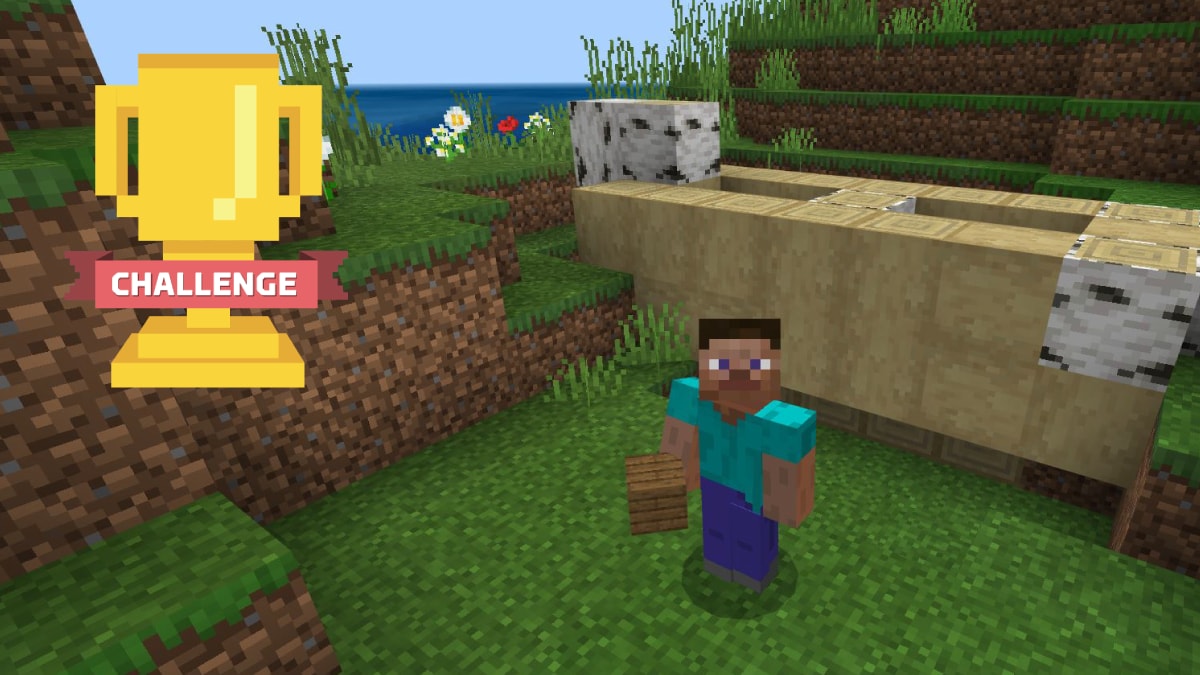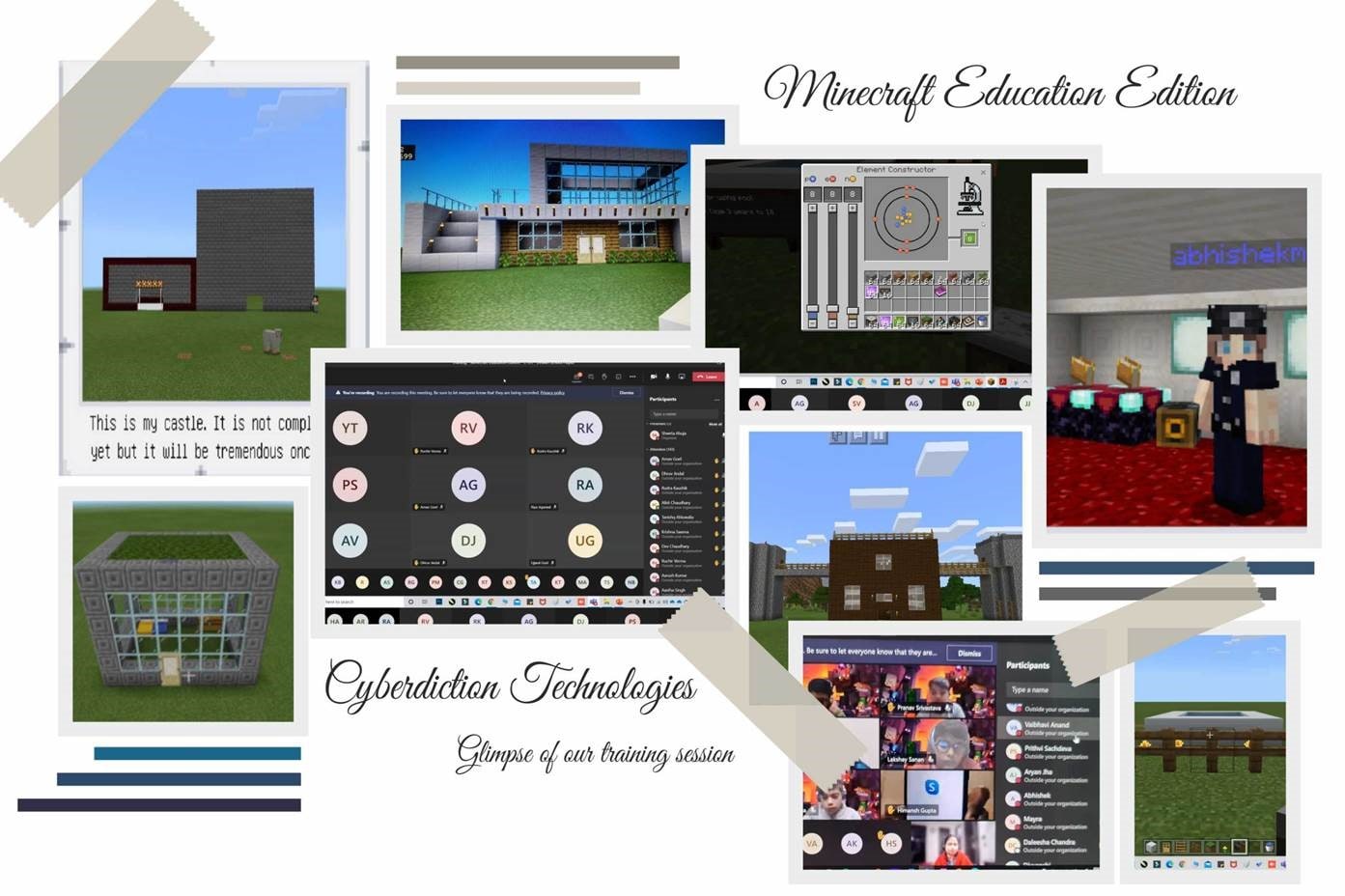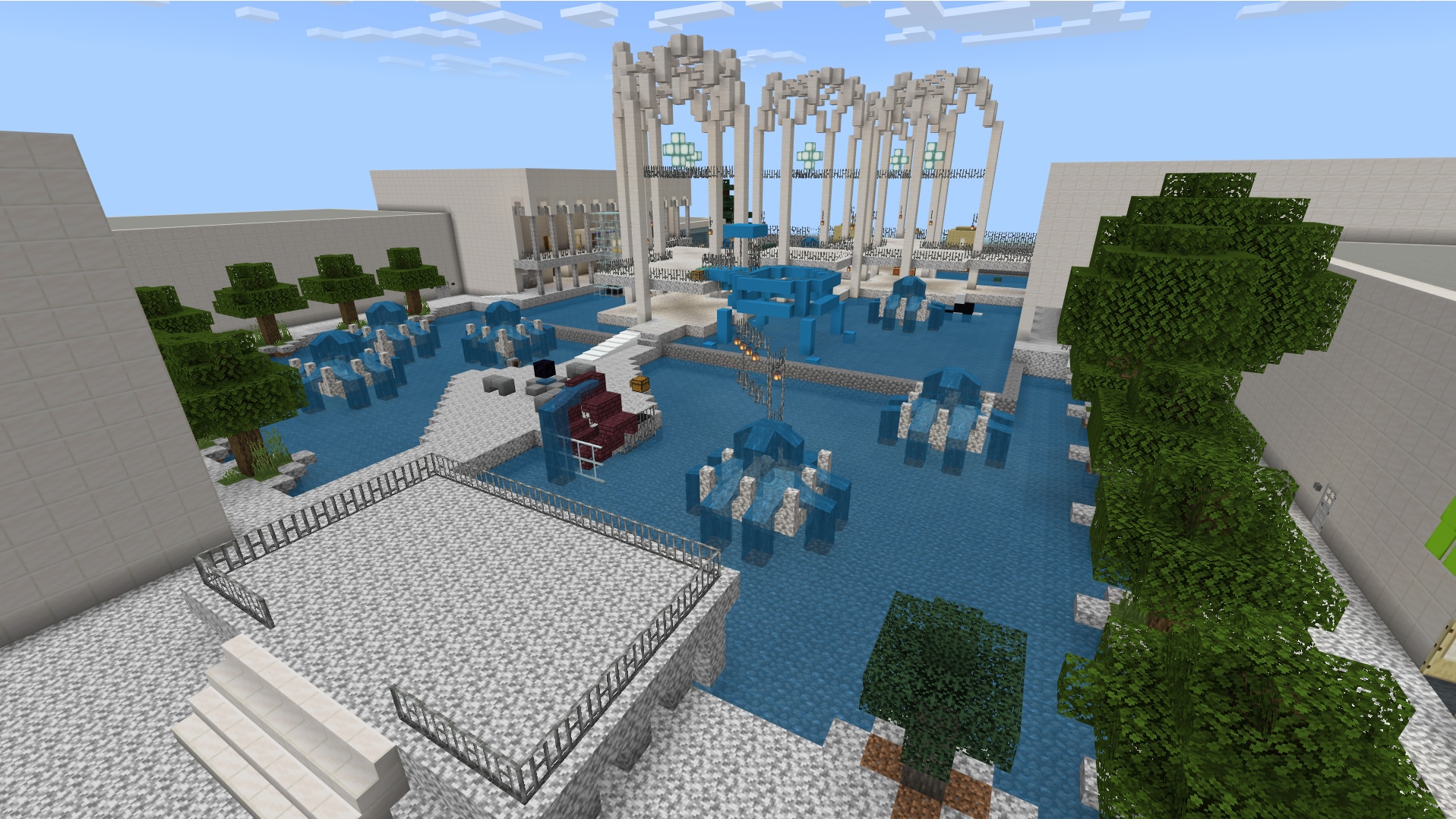Introducing students to game-based learning in India
06 Dec 2021

06 Dec 2021

Getting started with a new technology means bringing all of your stakeholders on board—and that includes the students who'll be using it every day! India's Cyberdiction Technologies helped get learners started with Minecraft: Education Edition during the pandemic. Read about their webinars and discover ways to invite your own students into the practice of game-based learning. Dr. Niti Dwivedi shares their experience in this guest post.
When one of our trainers at Cyberdiction Technologies volunteered as a judge for Minecraft: Education Edition's Global Build Championship, she shared her experience with our team. She told us that although there were wonderful projects from students all around the world, there were very few from students in India. We felt the need to create awareness within our communities about what the game could accomplish related to education. In India, parents are often hesitant when they hear about gaming in the classroom, fearing it won’t be a useful educational experience for their child at school. We felt challenged to address this.
All of this took place during the pandemic lockdown, so educators were looking for creative ways to engage students remotely. We thought to ourselves that it would be the perfect time to introduce them to Minecraft as a learning tool. Since students would be attending our sessions from their homes, parents would be able to see how they can learn many different skills through Minecraft. So, we decided to create the Cyberdiction Technologies India Student Webinars.

The origin of the student webinars
The main objective behind these webinars was to increase awareness about Minecraft: Education Edition's potential in the classroom. Unlike previous sessions where we explained the game's usage and integration to educators, these webinars focused on demonstrating its fundamentals directly to students. We outlined the differences between the Bedrock version of the game and Minecraft: Education Edition, as well as the ways it can enhance their learning.
There are a few challenges you face whenever you conduct remote webinars. First, the actual attendance of students varies because they're joining classes from home due to the pandemic, so not everyone can be there for the training. Some students also face internet connectivity issues. Not everyone has access to laptops or desktops, so they can occasionally find it difficult to log in and try what we discuss during our sessions.
Despite these challenges, one factor made things easy for us: Students already know so much about Minecraft that we don't need to push them to learn. They enjoy playing the game! They don't feel like they're taking part in conventional learning because they're doing things practically within the Minecraft environment. As a result, we've found that they retain what they learn for a longer period of time.
Three educators from KDB Public School in Ghaziabad shared their students' experience of the webinars:
Getting to know Minecraft isn't as much of a challenge for students as it is for teachers. The young generation is more tech-savvy, so educators require much more learning before they can master Minecraft. It really feels good when our students take the lead and we have the chance to follow them. They've begun to take control of their own learning during the units we're teaching!
Some of the students who weren't eager to attend virtual classes during the pandemic started taking an interest when they found out they'd be learning remotely with the help of Minecraft: Education Edition. Using the game, students have learned to play in a collaborative environment and respect their peers' creations.
Unlocking Minecraft: Education Edition as a learning and teaching tool
We've created a proper roadmap and learning path that we follow in our training sessions. In the first hour, we start by explaining Minecraft: Education Edition to students and how it differs from the version of the game they're used to, followed by illustrating the fundamentals of the platform. From the moment students learn how to move their character, take items from the inventory, and use them with the help of the hot bar, you can feel the excitement mounting.
We give them a little time for hands-on building, during which some of the students try creating a simple room or a swimming pool. Learners who are already Minecraft experts surprise us with their beautiful builds. Afterward, we explain how they can export and import their worlds to continue building the same project across multiple devices.
In the second hour of the session, we start teaching them how to integrate the game into their classes. It's wonderful that it's not just teachers who take a keen interest in the assessment tools. Students are also eager to learn. They're proud of their builds, so they want to showcase them to their friends, parents, and teachers with various features like the Camera, Portfolio, Book and Quill, Boards, and NPCs. As soon as they learn about the camera, the first thing they want to do is take an in-game selfie!

After explaining these tools, we describe how they can explore subjects like mathematics, coding, social science, arts, and chemistry. Although students tend to take an interest in all subjects, the response we get while demonstrating coding and chemistry is worth sharing. It's very rare to see the majority of students in a class crave more academic resources, but we witnessed it first-hand in our training sessions! For the first time, many students felt that chemistry could be fun, and their science teachers were overjoyed when they saw the game's subject-specific features.
Educators from Brilliant Public School told us how their students' creativity took off:
We use Microsoft Teams to connect during online classes, and our students have been making creative projects with Minecraft. The game engaged them from day one! They made sandcastles, gates, temples, underground hotels, forests, cities, and waterways. They've even created some minigames of their own. Our science teachers are also using Minecraft for subjects like chemistry.
Students have improved their artistic skills, problem-solving techniques, and programming logic. Due to the interactive and user-friendly nature of the game, learners are glued to the monitors. Minecraft has been a huge benefit during the pandemic!
Our two-hour sessions were only enough for an introduction, so we ensured that we made the students and teachers aware of the tutorials and lesson plans provided within the game so they could easily continue their journey. We also helped them familiarize themselves with the support options available on the web so that whenever they needed answers, they would know where to go.
Seeing results come to life
To date, we have trained around 1000 students on Minecraft: Education Edition, and in spite of the technical challenges many face at home, half of them have started using the game in the course of their regular studies. We hope that when students start returning to in-person school, even more will be able to use Minecraft regularly thanks to increased device availability. To support further engagement, we're planning to conduct a build championship for the schools we've trained, and we'll also encourage educators to organize inter-class and inter-school competitions.

In the end, the perspective that matters most comes from the students. The reactions we've received are an incredible energy booster! Here's what one group had to say:
The open sandbox format of this game makes absolutely anything possible! From the moment we started choosing our avatars, there was no denying that Minecraft would provide us with unprecedented opportunities for creativity. Some of us explored extensive cave systems underground while others built lavish houses. These projects revealed our architectural abilities.
Along with its endless scope for creativity, Minecraft also challenges our problem solving, resource management techniques, and geometry skills. We discovered new resources in the inventory and experimented with different recipe combinations to create tools. We also got to exercise our spatial awareness and geometry skills while building structures. For example, we had to brainstorm all the possible ways of arranging the six faces of a cube and how to stack blocks so they would be structurally sound.
Minecraft is unique because it allows players to set their own goals and offers an enormous amount of freedom in how we meet challenges. A crucial component of resource and project management in Minecraft is patience. Even in creative mode, where the player has access to unlimited blocks of every type, it takes patience and perseverance to complete an ambitious project.
The responses to the training sessions are the motivational force that will help us to continue this journey.
***
Dr. Niti Dwivedi is a consultant and trainer with Cyberdiction Technologies and a Microsoft Innovative Educator Expert in Delhi, India.
If you're new to Minecraft: Education Edition, get started today! Find Microsoft Education Training Partners in your region to help you begin your journey.